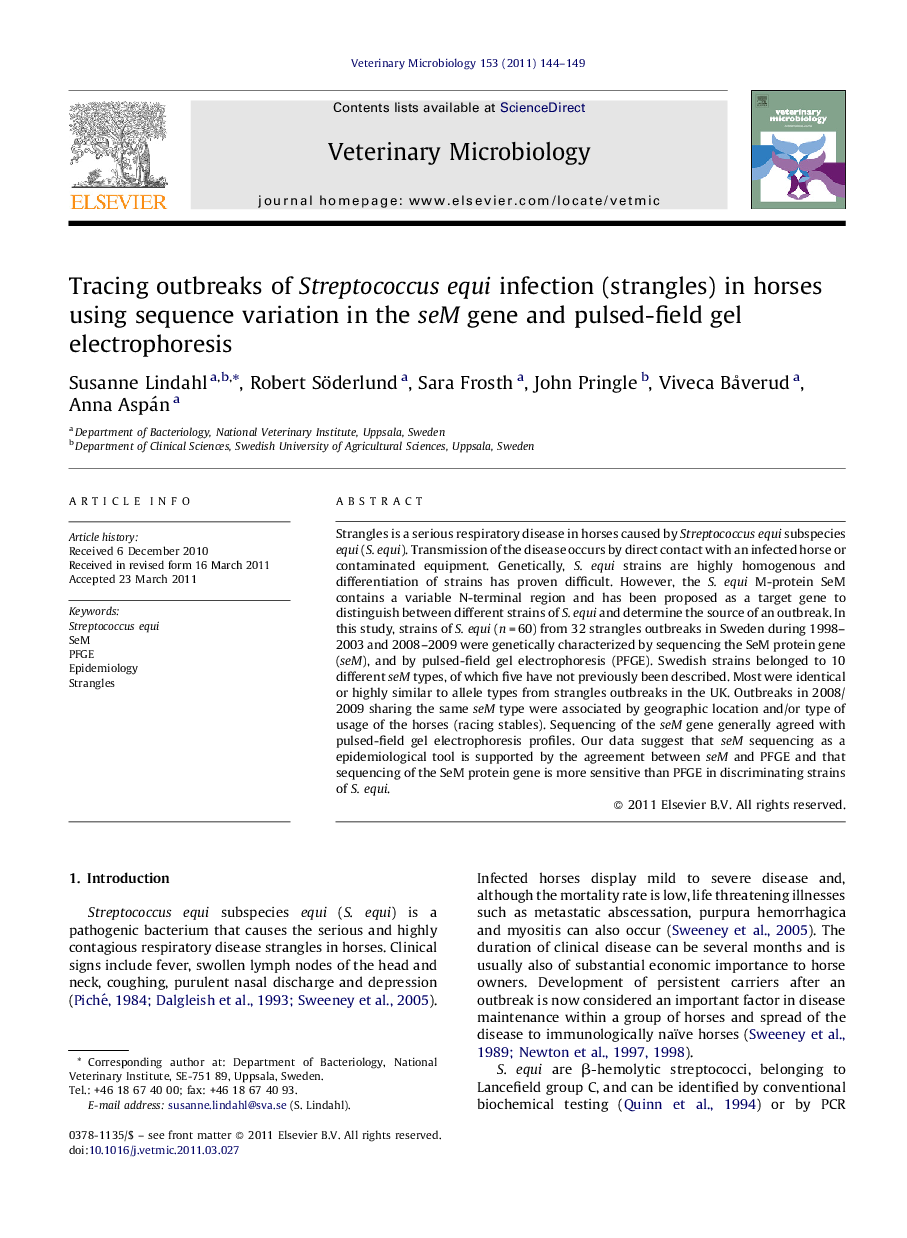| Article ID | Journal | Published Year | Pages | File Type |
|---|---|---|---|---|
| 2467497 | Veterinary Microbiology | 2011 | 6 Pages |
Strangles is a serious respiratory disease in horses caused by Streptococcus equi subspecies equi (S. equi). Transmission of the disease occurs by direct contact with an infected horse or contaminated equipment. Genetically, S. equi strains are highly homogenous and differentiation of strains has proven difficult. However, the S. equi M-protein SeM contains a variable N-terminal region and has been proposed as a target gene to distinguish between different strains of S. equi and determine the source of an outbreak. In this study, strains of S. equi (n = 60) from 32 strangles outbreaks in Sweden during 1998–2003 and 2008–2009 were genetically characterized by sequencing the SeM protein gene (seM), and by pulsed-field gel electrophoresis (PFGE). Swedish strains belonged to 10 different seM types, of which five have not previously been described. Most were identical or highly similar to allele types from strangles outbreaks in the UK. Outbreaks in 2008/2009 sharing the same seM type were associated by geographic location and/or type of usage of the horses (racing stables). Sequencing of the seM gene generally agreed with pulsed-field gel electrophoresis profiles. Our data suggest that seM sequencing as a epidemiological tool is supported by the agreement between seM and PFGE and that sequencing of the SeM protein gene is more sensitive than PFGE in discriminating strains of S. equi.
